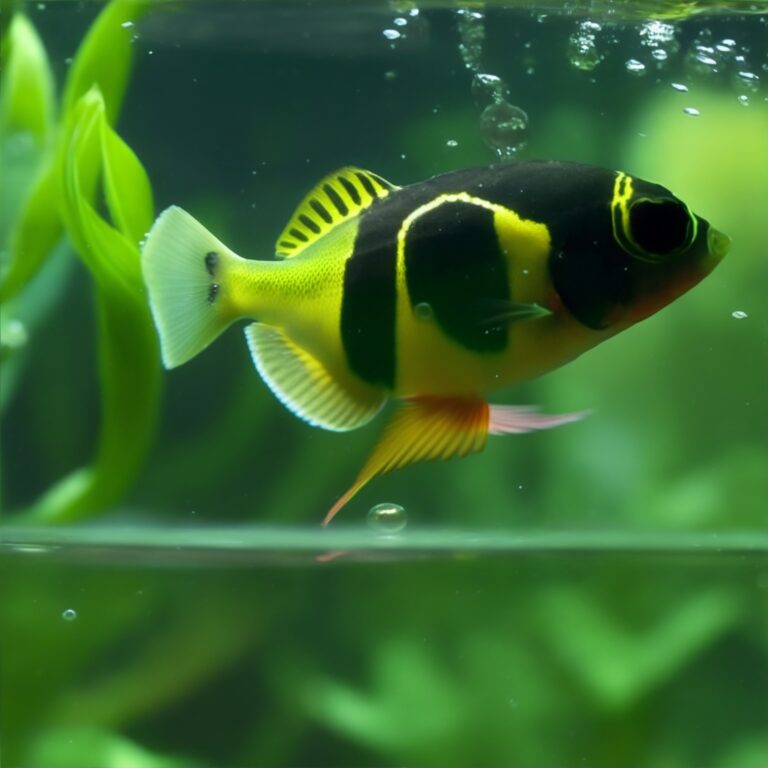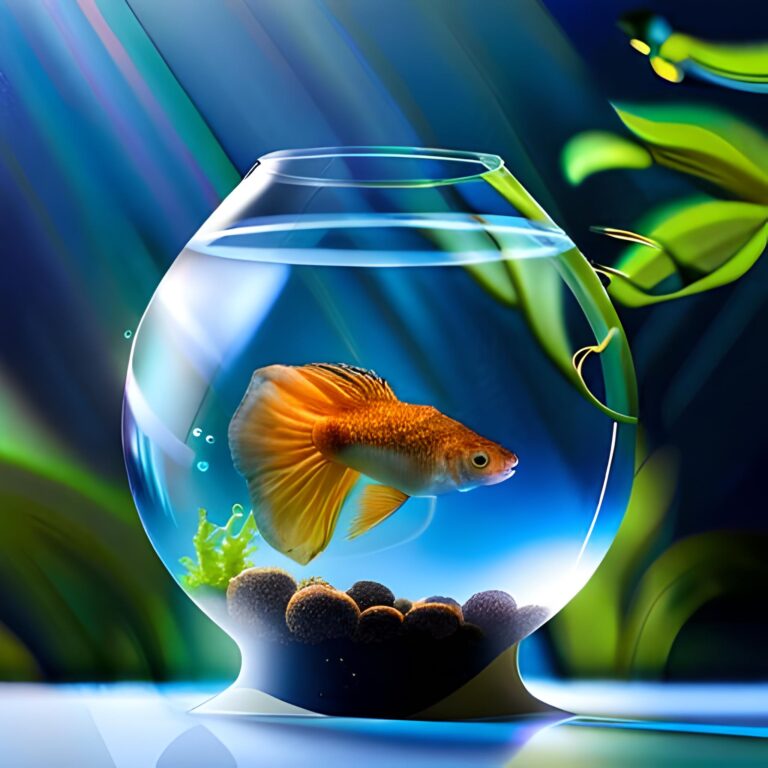Do Guppy Fish Lay Eggs? Understanding Guppies Breeding
Are you curious to learn everything you need to know about guppies and their amazing reproduction system? Well, you’ve come to the right place! In this brief introduction, we will dive into the fascinating world of guppies and discover whether guppies lay eggs or give birth to live young. So let’s get started and unravel the mystery behind guppy fish eggs!
Guppies, those lovely little fish you often find in aquariums, have a unique way of reproducing. Guppies lay eggs rather than giving birth to live young like mammals do. This means that female guppies release eggs into the water, which are then fertilized by the male guppies. Once fertilized, the eggs undergo a process called incubation, where they develop and mature. After a period of time, these tiny guppy fish eggs hatch into adorable baby guppies, ready to explore the underwater world.
Guppy Reproduction
Guppies have been popular pets for over a century due to their beauty, adaptability, and easy care. However, their way of making babies can be quite perplexing. Let’s explore the mysterious world of guppy reproduction. So, do guppies lay eggs? No, actually guppies are livebearers, which means they don’t lay eggs like some other fish. Instead, pregnant guppies give live birth to their babies.
Female guppies can have up to 200 baby fish, called fry, at once. The number of fry can vary, depending on factors like the size of the female guppy. Now, here’s where things get interesting: male and female guppies have different body parts for reproduction. Male guppies have a special fin called a gonopodium, which they use to deliver sperm inside the female during mating.
On the other hand, female guppies have a tiny opening called a genital pore, located beneath their fin. This is where the sperm enters the body. After mating, the female fertilizes the eggs inside her and carries them for about 28 days. Finally, she gives birth to tiny live guppies instead of, you know, laying eggs.
Guppy mating habits are quite fascinating! Male guppies use their vibrant colors and long fins to catch the attention of females. The female carefully looks at the male’s colors and fin size before deciding to mate with him. The actual mating process is pretty quick. The male deposits sperm inside the female, and then fertilization happens internally. After that, the female holds the developing eggs inside her body until she’s ready to give birth.
Understanding guppy reproduction is important if you’re interested in breeding them. Breeding guppies can be an exciting and rewarding experience! In the next part, we’ll talk about creating the right environment for guppy breeding and taking care of the adorable fry. Stay tuned!
Setting up a Guppy Breeding Tank
Setting up a tank to breed guppies can be a super fun and rewarding experience! First, you’ll need a male and female guppy. You can find them at your local pet store. Once you have both, it’s time to prepare a tank for them. Make sure the tank is spacious enough for the guppies to freely swim and has lots of hiding spots for the guppy fry. Instead of a regular filter, use a sponge filter to prevent the tiny babies from getting sucked in and harmed. To encourage breeding, maintain water temperature between 75-82°F and a pH level of 7.0 to 7.2.
Adding plants like Java Moss or Water Wisteria is a great idea since they provide hiding spots for the fry. Some guppy breeders even try to breed guppies with specific traits, like fancy colors or unique tail shapes. However, remember that this process takes time and patience. Also, please be careful to avoid inbreeding, which can result in genetic problems. Guppies usually give birth to live babies called fry in about 21 to 30 days.
Taking care of guppy fry requires attention to detail. Once they hatch, feed them small amounts of spirulina powder or baby brine shrimp every few hours. Always remove any uneaten food from the tank to keep the water clean. As the fry grow, they need enough space and food to thrive. It’s best to separate them from the adult guppies and keep them in a different tank. This prevents the adults from accidentally eating their offspring. Breeding guppies can be exciting and rewarding, as you watch them grow and flourish. Just remember to avoid inbreeding, provide hiding spots, and maintain a clean tank.
Guppy Genetics
Guppies are not only interesting in their behavior and how they have babies, but their genetics also play a big role in shaping who they are. Let’s take a closer look at some important things about guppy genetics.
When it comes to making babies, guppies have predictable inheritance patterns that scientists find fascinating. Unlike some other fish, guppies use certain genes to determine their sex. Female guppies have XX chromosomes, while males have XY chromosomes. This means that males have both male and female genes on their sex chromosomes, while females only have the female gene.
Another cool thing about guppies is how their colors are determined by their unique color genetics. Guppies are famous for their vibrant and eye-catching colors, and that’s because of genes. The color of the baby guppies depends on which genes are dominant or recessive in the parents. If both parents have dominant genes for a certain color, that color will be dominant in their baby guppies.
Genetic mutations are also part of the guppy world. Studying guppy genetics for many years, scientists have discovered common genetic mutations that cause variations in their colors, patterns, and body shapes. For example, the Moscow guppy has a special mutation that makes it have black pigmentation in its body, setting it apart from other types of guppies.
Understanding guppy genetics is a complex and fascinating journey that adds to the mystery and charm of these beautiful fish. Whether you want to breed guppies or simply enjoy their beauty, knowing about their genetics gives you a deeper understanding and appreciation for these incredible creatures.
Remember, guppies don’t lay eggs like most fish do. They are livebearers. So, if you want a tank full of guppies, make sure to keep them healthy and stress-free. Baby guppies, called fry, take about 6 months to grow up. Female guppies may have a gestation period before giving birth to live babies. Sometimes, you might even find unfertilized eggs that never formed into baby guppies.
Conclusion
It’s a mysterious world out there, especially when it comes to guppy reproduction. These fish are not only gorgeous, but they also have some interesting traits that make them stand out from other species. Understanding the beauty and mystery of their reproduction will help you appreciate and enjoy your guppies even more. Guppies are fascinating creatures, and their reproduction is no less exciting.
Their colorful bodies, intricate patterns, and unique personalities make them a popular choice for aquarium enthusiasts. Guppy reproduction is quite simple: Yes, guppies do lay eggs. However, there’s more to it than meets the eye. Male and female guppies have distinct differences in their anatomy, which determine how they mate and reproduce. Learning about their mating habits is key to caring for them properly.
Breeding guppies can be the ultimate test for a fish enthusiast, which requires patience, attention, and understanding. Inheriting qualities from their parents, guppy genetics can be quite complex. Understanding what traits are passed down and how they are expressed can help you develop specific qualities in your guppies to create that perfect look. Guppies are more than just fish, they are part of a vibrant and unique world. Beauty and mystery surround their reproduction, and a personalized approach is essential to truly enjoy and understand these beautiful creatures.


